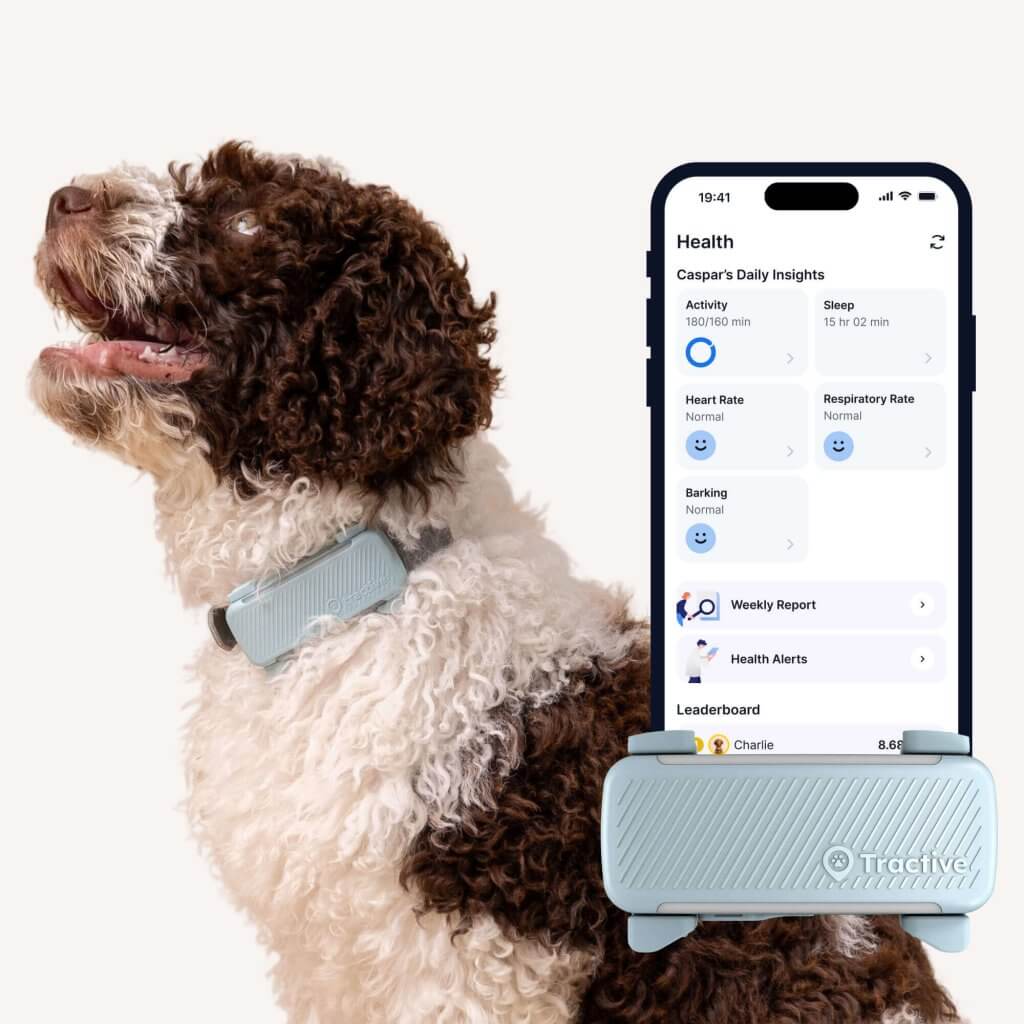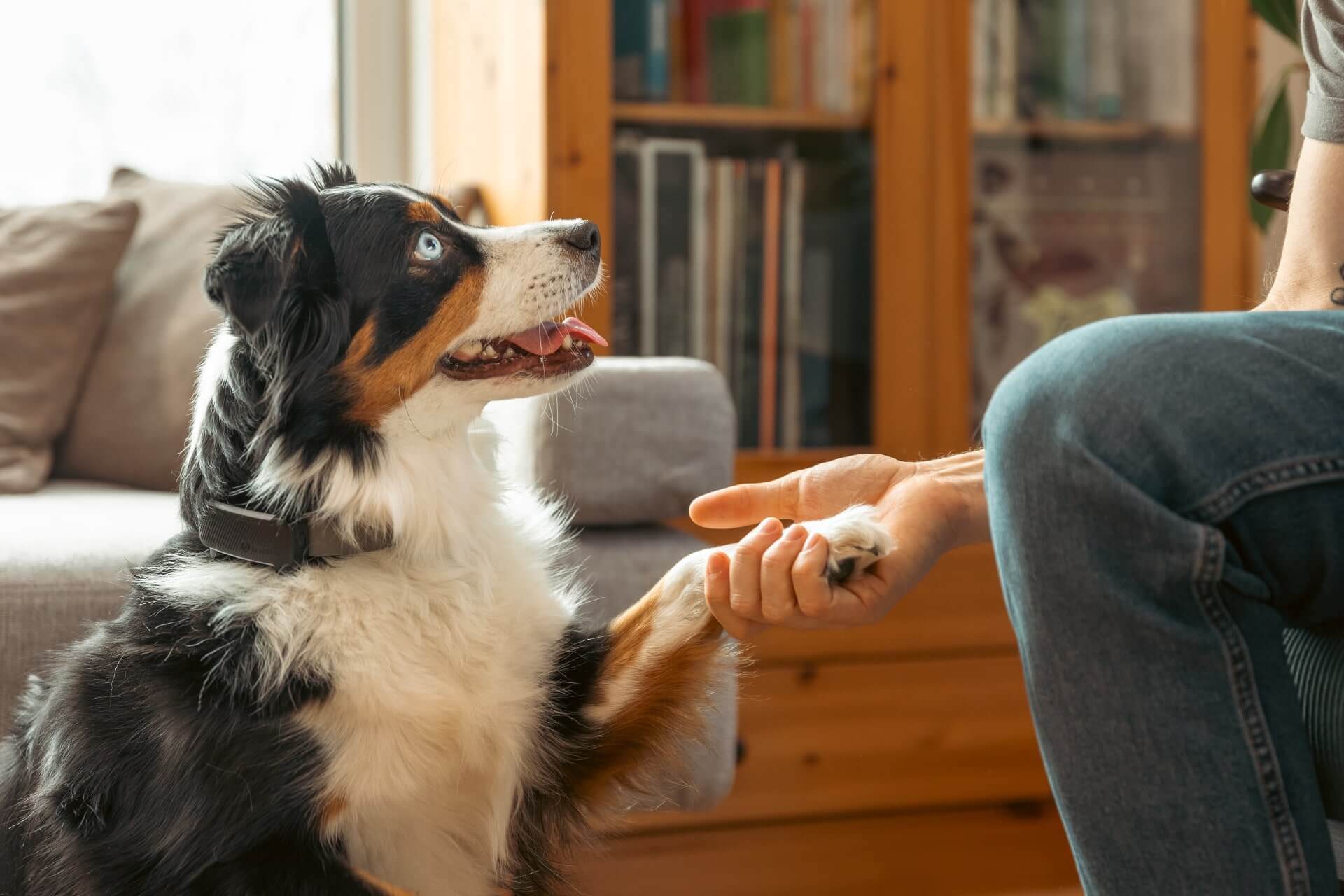Why Is My Dog Howling? (And How To Get Them To Stop?)
Here's how to figure out what they're telling you - and when it might signal an emergency.

Whether you’ve just adopted them or had them for years, dealing with a howling dog can lead to a fountain of Internet memes if you’re filming a canine chorus. Or be a major pain in the butt at worst. (Especially if you’ve got neighborhood quiet times to stick to!) Here, we’re going to cover all the reasons behind this endearing, complex (and ear-splitting) behavior. Plus, how a Bark Monitor for dogs can help you understand what they’re trying to tell you.
Quick Summary
Dogs howl to communicate, especially when they’re anxious, bored, in pain, or reacting to sounds like sirens or music. Certain breeds (like Huskies or Beagles) are more likely to howl due to their genetics. Separation anxiety is a major cause of excessive howling – watch for howling when your dog is left alone. Understanding the cause is key; use tools like a Bark Monitor or pet cam to spot patterns and triggers. Make sure your dog isn’t bored or missing out on their training to reduce howling, and speak to a vet if it could be health-related.

Always know your buddy is healthy & safe
Read moreWhy do dogs howl?
Howling is an instinctual behavior for dogs. Much like barking, growling, or whining, it’s just another way dogs communicate. (Just like your dog’s wild ancestors might have in their packs.) For example, howling helps wolves and wild dogs send a message over long distances. Like signalling where they are or calling all the pack members to gather round. In many ways, your buddy hasn’t changed that much from their wild ancestors. (Yes, no matter how much of a pampered furball they are.)
💡A Bark Monitor for dogs alert you to excessive vocalizing – including howling or barking – so you can keep an eye (or “ear”) on your dog remotely.

Get health alerts for your dog
Our pups can’t always tell us if something’s wrong. But if their tracker detects unusual changes in their routine, you’ll get an alert, helping you catch potential issues early.
Why is my dog howling?
- Sounds outdoors
Including high-pitched frequencies, like the hum of indoor appliances. Or even loud noises, like passing cars. Your dog might howl to alert you about the “threat” in the environment. - Your voice
If you sing out loud or similar, your buddy might join in. It’s possible they think you’re communicating with them in their “language.” - Separation anxiety
Like if your dog exclusively howls when you leave home or leave them alone. They could be howling to express their discomfort. Or even calling out to you in the hope you’ll come back home. - Boredom
Howling helps your dog release any pent-up energy and frustration. (Kind of like how we fidget or pace around when bored or restless.) - Pain
Watch out for sudden howling and vocalizing out of nowhere. It could be that they’ve been injured or are experiencing a medical issue. If you’ve got a senior dog suddenly howling and vocalizing, it could indicate age-related health issues, like arthritis or even cognitive decline. - Changes in your environment
Your dog’s howling might be triggered by something in your environment – which is out of sight, smell, or hearing range of us humans. Like changes in atmospheric pressure, which could signal an approaching storm. Or even animals outdoors – even miles away – invading their territory. - Reproductive instincts
Got an unspayed female dog older than 6 months howling her head off? She could be in heat. All the howling is to help her attract any nearby male dogs. - Territorial and protective instincts
Howling is a way of dogs to show who’s boss or to guard what’s “theirs”. Which might turn up as your buddy howling to signal “Back off!” to the Amazon delivery folks or even strangers walking past your yard.
Are some dogs more likely to howl than others?
If you’ve got multiple dogs at home, one with a more “dominant” personality might howl a bit more than the others to show them who’s boss.
Puppies might howl more since they’re still growing, essentially helpless, and need a ton of attention. Since their senses are developing, they might also pick up on high-pitched sounds we can’t hear. But which put them on alert mode – and trigger some howling and vocalizing.
How about senior dogs? Turns out, if your older buddy is from an “ancient breed” – or one more genetically related to wolves – they might actually howl more than younger dogs!1
Likewise, some working dog breeds, like Huskies and Malamutes. These dogs were bred to run long distances tugging along sleds. (Either for races or as part of transport.) Meaning, they might be more likely to howl to communicate over long distances. The same applies for former hunting dog breeds, like Beagles and “hound” dogs. They might “bay” – or howl at a lower frequency – to alert hunters they’ve spotted prey and are about to chase it down.
Finally, dogs bred to guard people, property, or livestock – including the Shepherd family, Great Pyrenees, and Border Collies – also tend to howl more.
Steps you can take to keep your howl-happy buddy safe
Figure out what tends to trigger your dog’s howling
One of the most effective ways to help your dog stop howling is to identify what’s setting them off in the first place. So start by paying attention to the context:
- Is your dog howling when they’re left alone?
- Does it happen at specific times of day?
- Could it be tied to something outside, like other animals or loud noises?
Using tools like a Bark Monitor or even a pet cam can help you pinpoint when the howling starts. Once you know the triggers, you can take specific steps to reduce or eliminate them – whether that means providing extra stimulation, gradually desensitizing your dog to a noise, or addressing separation anxiety with training and comfort strategies.
Understanding the why behind the howl is the first step to finding a solution that sticks.
Regular training – including with the pros, if necessary
It might seem tedious, but in an emergency, your dog’s basic obedience training can be a lifesaver. Commands like “Come back!” and “Stay,” are especially helpful for an energetic, vocal dog that’s in the habit of leaping at the sound of a doorbell or off chasing whatever sight, sound, or smell they catch.
- Distract them with a toy and a “Stay” command, so they’re occupied while you answer the door.
- Give your dog a “job” to do – like putting away their toys or transporting items from one spot to another in your house. With time, you can graduate to more complex tasks, like waking up your kids, closing doors, or finding lost items.
- Reward your dog plenty when they’re quiet and well-behaved. All too often, we might only give our dogs “attention” when they’re misbehaving – which you do want to avoid. So keep some treats at hand for when your buddy responds to commands like “Quiet,” or “Stay.”
- Revisit your obedience training every so often to keep your dog’s memory fresh.
- Don’t hesitate to get started with teaching your dog new tricks and commands – yes, even if they’re a puppy or a senior dog. The mental activity can prevent any boredom-related howling or mischief.
If your buddy’s howling stems from anxiety or fear, your vet, a professional behavioral specialist or training school can help you address these underlying issues.
Prevent your dog from getting bored
- Get your dog at least a walk before you leave. Try and schedule it around the time you take them out for their morning toilet break – just a few blocks before you head to work.
- Interactive toys like puzzle feeders can help keep your buddy occupied indoors when you’re not around.
- Dog TV is another option, with some 8-10 hour long videos on YouTube. Just be mindful you pick one that doesn’t drive your dog to leap at your TV screen!
- Make sure someone checks up on your dog periodically – both to give them some company and let them out for another toilet break, if necessary. A dog walker/sitter or even a nearby dog day care can help them get the attention and activity they need.
Use a Bark Monitor for dogs
If your dog is howling more than usual, they might be trying to tell you something – whether it’s boredom, fear, or feeling lonely. A Bark Monitor for dogs, like Tractive, can help you understand the why behind your dog’s vocalizations, so you can take action that actually works.

Your Tractive smart tracker includes both GPS and Health tracking – and a built-in bark monitor to give you 24/7 insights into your dog’s barking and howling behavior, even when you’re not around. Strapped to your dog’s collar, here’s how it helps:
- Bark Alerts:
Get notified when your dog barks intensely – great for catching sudden changes or signs of distress. You can also check when and how often your dog has been barking or howling throughout the day.

- Separation Anxiety Monitoring
Switch on before you leave home and get alerted if your dog tends to bark more when they’re left alone. This can be a key sign of separation anxiety, and the app can help you spot patterns over time.

- Health Alerts
With its built-in motion detector, your Tractive device also monitors your dog’s active minutes and sleep quality. So if there’s any weird change in these – which could be a red flag, health-wise – your tracker sends you a Health Alert, helping you take action early.
By combining real-time alerts with long-term behavior tracking, a dog Bark Monitor helps you get to the root of the issue – so you can support your dog with training, comfort, vet care, or just a check-in via the petcam if needed. And most importantly, it gives your dog a voice when you’re not there to hear them.



